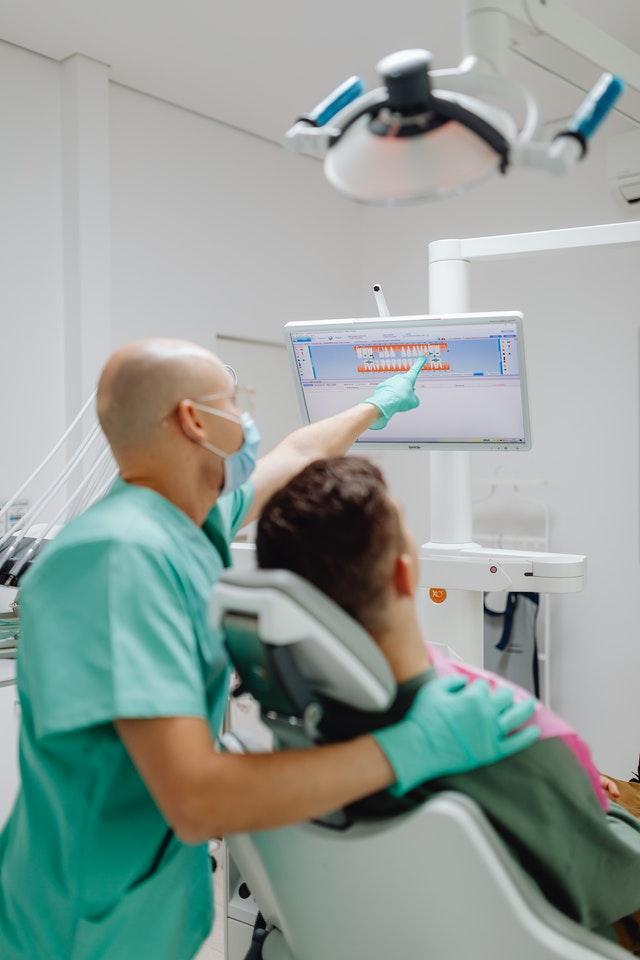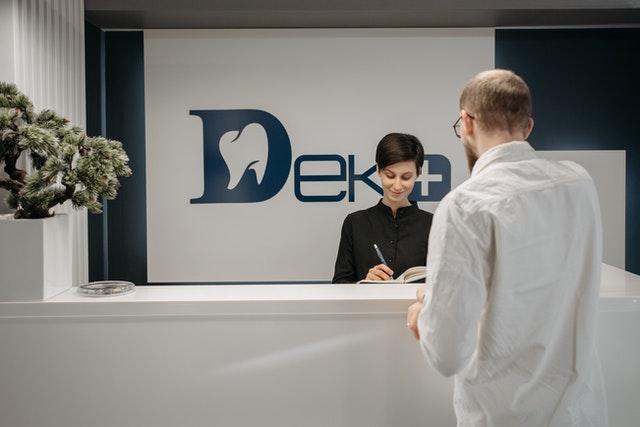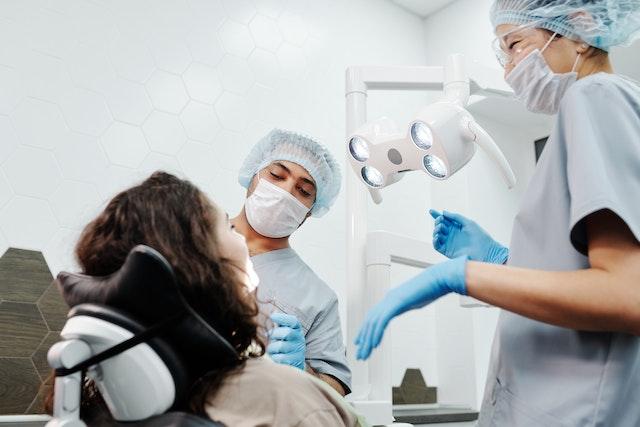The Best Teeth Replacement Options in 2023
There are many different reasons why people might seek out teeth replacement options. Some people are born without certain adult teeth and need dental intervention to compensate and others loose their teeth for any various number of reasons.
This article will outlive the best teeth replacement options currently available and what you should consider when deciding which is best for you.
Table of Contents
Things to Think About Before Considering Teeth Replacement Options

There are a number of different factors to consider when you are looking into the best teeth replacement options for your smile.
Here are some of the most common factors that play a role in tooth replacement options:
- Area of Missing Tooth: Some patients do not replace a tooth because it doesn’t affect their quality of life.
- Bone Loss: If significant loss of bone is present, not all options are viable for tooth replacement.
- Age of Patient: Tooth loss is very common among elderly patients and priorities may shift.
- Insurance Factors: Insurance doesn’t always cover all treatment options and possibly only covers a portion of them.
- Timing: Some teeth replacement options take more time to complete than others.
Complications From Putting Off Tooth Replacement Options
Whether the tooth is congenitally missing or premature tooth loss occurred, replacing your tooth will improve oral health and help keep your smile strong. Possible consequences of not replacing the missing teeth are:
- Bone Loss: After a permanent tooth loss, your bone is susceptible to permanent bone loss. Without a tooth in place, the bone is no longer stimulated and starts to weaken. This can possibly affect the neighboring teeth in that area.
- Teeth Shifting: Teeth like to touch and will shift throughout your life. If a tooth is missing, the neighboring teeth will start to lean and drift in the mouth. This can also cause a domino effect involving several teeth shifting over time.
- Gum Disease and Cavities: Missing teeth can cause gaps where food, plaque, and bacteria can hide in. The gum pockets harbor the bacteria and increase your risk of gum disease and cavities.
The 4 Best Teeth Replacement Options
Dental bridges, dental implants, dentures, and orthodontics are the most common procedures for teeth replacement options. Each tooth serves a purpose in the mouth, so it’s important to think of these factors on a case-by-case basis.
Below you’ll find a detailed explanation of the 4 best teeth replacement options.
Dental Bridges
Dental bridges are just one of the possible teeth replacement options to choose from. There are three main types of bridges that your dental professional will choose from to best suit the area of tooth loss.
Factors that impact the chosen bridge are the type used and the number of teeth involved.
- Traditional Fixed Bridge: This bridge uses the two healthy adjacent teeth to help support the missing tooth restoration in the middle. The adjacent teeth and the missing tooth will need a crown that is usually made out of porcelain fused to metal or ceramic material.
- Maryland Bridge: A resin-bonded bridge is commonly used for missing anterior teeth. The pontic, the tooth that fills in the gap, will have metal or porcelain wings that attach to the adjacent teeth.
- Cantilever Bridge: This type of bridge is similar to a traditional fixed bridge but is only supported on one side of the missing tooth. This is common for patients that want to replace a molar.
The prices of these dental bridges can range. Most insurances will cover a portion, if not all, of this type of the teeth replacement options. For more information, check out our The Average Cost for a Dental Bridge article.
Dental Implants
Dental implants are becoming increasingly popular for several reasons. Implants can improve your bite, prevent future bone loss, maintain tooth function, and improve the aesthetics of your smile.
There are several steps needed for a successful dental implant:
- Consultation: Some implants will need a specialist. At this appointment, additional scans and x-rays will possibly be needed.
- Pre-Treatment Surgeries: Bone grafts, sinus lifts, and bone smoothing (Alveoloplasty) are sometimes needed for implant success and can add 3-12 months to the treatment.
- Placement of Implant: Your dental professional will skillfully place the implant in a 1-2 hour appointment.
- Post-Implant Healing: The implant needs time to heal and bond to the surrounding bone (Osseointegrate). This usually takes between 3-6 months but sometimes more. Follow-up appointments will be scheduled accordingly.
- Abutment Placing: An abutment is where your permanent restoration will attach to the implant. This includes folding back the gum tissue.
- Restorative Crown Placing: A few weeks after the abutment is inserted, your crown can be placed. This is usually done by your general dentist, not the implant specialist.
For more information on dental implants and how much they cost, check out our article Breaking Down Tooth Implant Cost.
Braces

Orthodontics is a common practice to address tooth loss. Our article Using Braces with Missing Teeth goes more in-depth on your orthodontic treatment options.
Some people are born without teeth and others have tooth removal treatment planned as part of their braces process. The main types of braces are:
- Traditional Metal Braces: Traditional metal is still a great option for braces and continues to be the most popular choice. Metal braces can also provide faster and more affordable treatment than other options.
- Lingual Brackets: Lingual orthodontic treatment uses traditional metal brackets but places them on the inside of the teeth. This provides the efficient movement of metal brackets without their aesthetic appearance.
- Ceramic Brackets: Using a ceramic bracket material combines the trusted technology of metal brackets with a more discreet appearance.
- Clear Aligner Therapy: Clear aligner therapy uses 3D technology to create a computerized alignment system through a series of removable plastic trays. This system relies on the patient’s discipline to wear them for 22 hours per day and change trays every 1-2 weeks.
Additional information on braces:
Dentures
Dentures are the least invasive and can be the most cost friendly of the tooth replacement options. Your general dentist will take an impression or a 3D scan of your mouth and with the help of a lab fabricate a custom denture.
They are made out of a combination of acrylic, nylon, porcelain, resin, or metal materials. Dentures can also be made to be removable or fixed, depending on what the patient needs.
- Partial Dentures: These are used when a patient is only missing one or a few teeth in an arch. They will have clasps that anchor to the adjacent teeth.
- Full Dentures: This type of denture replaces the entire arch or row of the mouth. If used on the top, the denture will cover the palate or roof of the mouth. If used on the bottom, it will be horseshoe-shaped to have space for the tongue.
- Fixed Dentures use implants to anchor the denture to the bone. This can offer more support and improve the quality of life.
Recommendations on the Best Tooth Replacement Options
It’s always best to consult with your dentist before deciding which of the tooth replacement options is best for you. Each situation has a number of different factors that can influence which of the tooth replacement options are best.
Also, your dentist will very likely be the one that implements the tooth replacement options of your choosing, so it’s best to involve them in the decision and process as early as possible.
Frequently Asked Questions
What is the best option for replacing teeth?
Every tooth in every mouth is unique. The best option for replacing teeth depends on what tooth was lost, the surrounding bone structure, aesthetic needs, and the financial budget. Dental implants are becoming more popular and tend to feel the most like the original tooth.
What is the cheapest way to replace teeth?
Dentures are the cheapest and least invasive teeth replacement option. Your dentist will work with a dental lab to provide the best outcome in the most cost-effective way to replace missing teeth.
Take Home Smile Store
Visit our Take Home Smile store for educational brochures and other fun printables to help with oral hygiene. All products can be customized to fit your dental needs.



